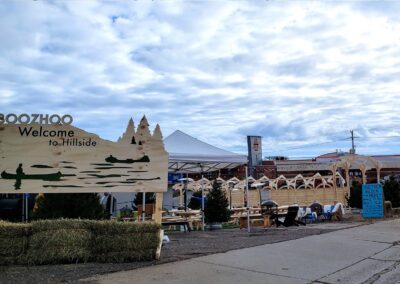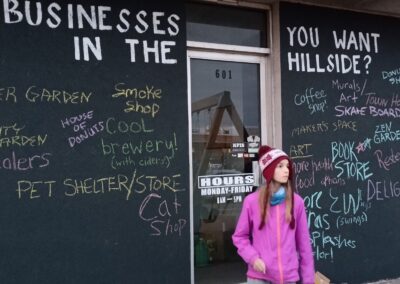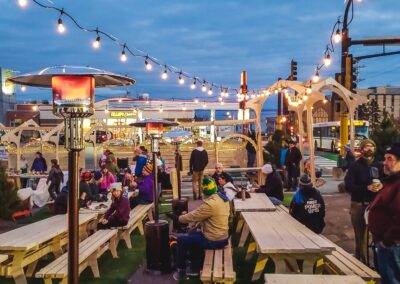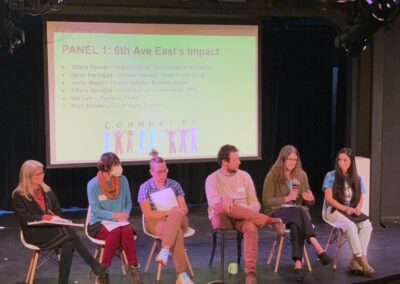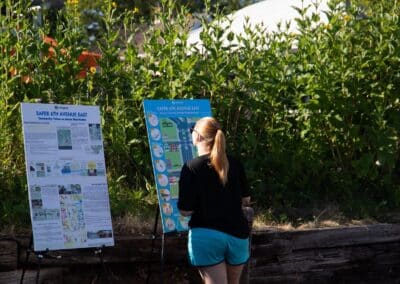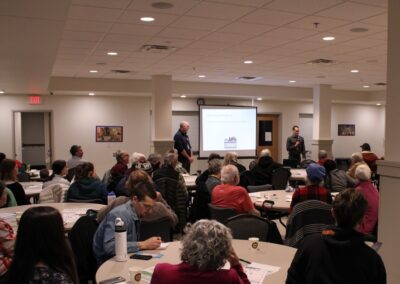WE DID IT!THANK YOU FOR HELPING CREATE A SAFER 6TH AVENUE EAST
Up until recently, 6th Avenue East was a relic of the former highway system that divided the Hillside neighborhood. Paired with redlining, its high-speed design caused major health disparities for the neighborhood. Following a decade and a half of grassroots advocacy, the City of Duluth finally heard residents’ concerns and committed to reconfiguring the corridor in 2025, with a plan to conduct full corridor reconstruction in 7-10 years. Phase 1 Resurfacing included numerous safety enhancements (see below) and the opportunity to test features for full reconstruction. Phase 2 Full Reconstruction gives us the chance to reimagine not just the road but the entire corridor and contribute to revitalizing the neighborhood so people can thrive.


TIMELINE
2025
Phase 1: Resurface 6th Avenue East from 2nd Street to Mesaba Avenue
2026-2028
Evaluate Reconfigured Roadway and Gather Feedback
2028-2030
Make Adjustment and Undertake Planning Process for Reconstruction
2030-2032
Develop Preliminary Design Alternatives and Fundraise
2032-2034
Select Preferred Alternative Design and Develop Plans for Reconstruction
2034-2035
Target Full Reconstruction of 6th Avenue East
PHASE 1: RESURFACING
These major traffic calming and pedestrian safety measures were included in 2025 Resurfacing because of your community input. Thank you for being part of the change!
Click the image to learn more about each change.
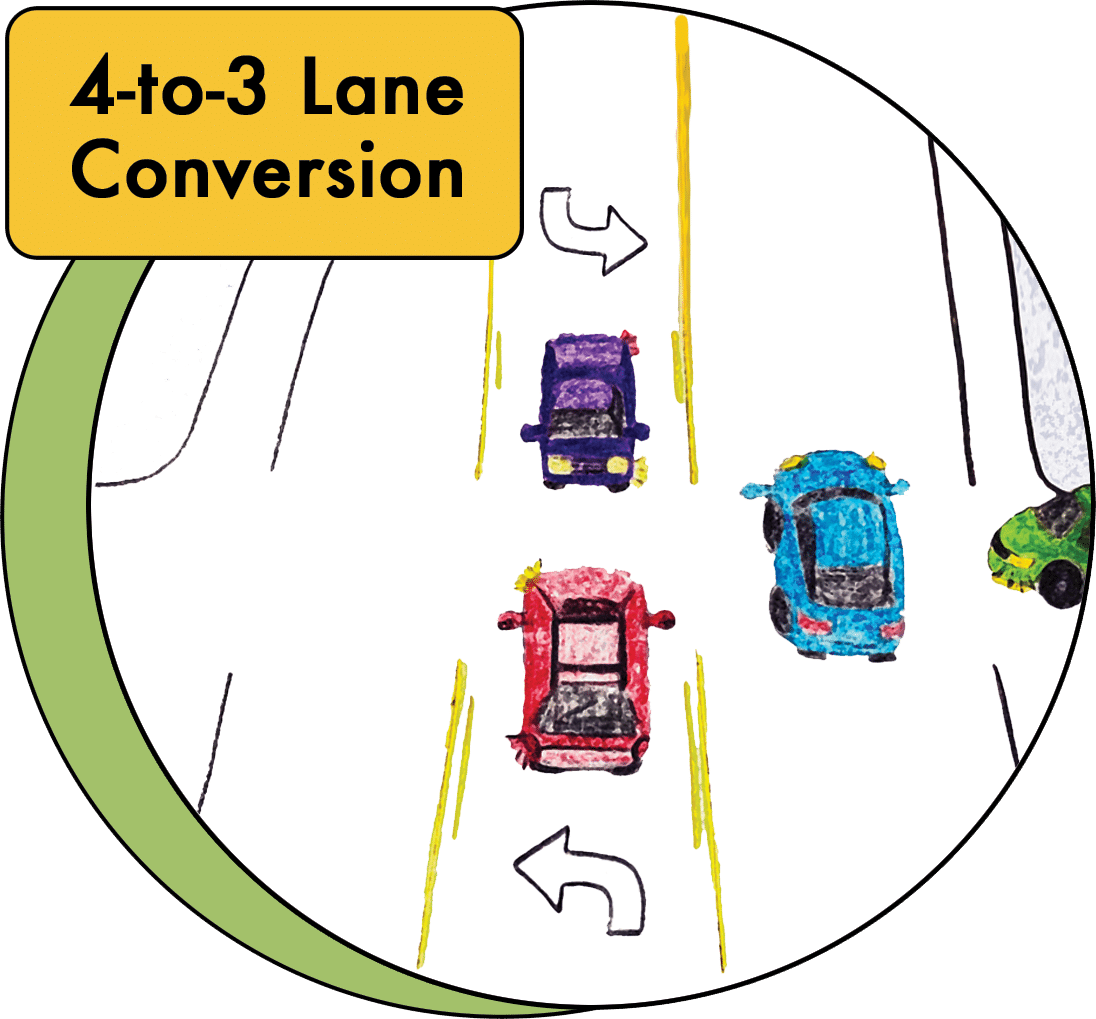
4-to-3 Lane Conversion
Traffic crashes are a primary issue on 6th Avenue East. The U.S. Department of Transportation is recommending a 4-to-3 lane conversion for any street that handles under 25,000 cars per day. Traffic studies from 2014-2023 show that 6th Avenue East handles <12,000 cars per day (equivalent to 4th Street which has 2 lanes)—and those numbers are decreasing each year. Converting the street from 4-to-3 lanes won’t drastically impact commute times but will calm traffic and reduce crashes by 19-47%.* Learn more about 4-to-3 lane conversion.
*Source: U.S. Department of Transportation Federal Highway Administration

ADA Ramps
The Hillside has 25% of people living with disabilities compared to Duluth’s 13%, and 22% of people who are 65+ compared to Duluth’s 15%. Additionally, 1 in 3 households in the Hillside don’t have a car which means that having accessible sidewalks and crossings along 6th Avenue East is a major priority for the community. In 2025, along with restriping, the City is making all curbs ADA compliant. The design of these curb ramps is dependent, in part, on public input with regards to: Ramp Angle—diagonal (pointing into the middle of the intersection) or perpendicular (pointing into the crosswalk), Ramp Width, Ramp Color, and Ramp Texture.
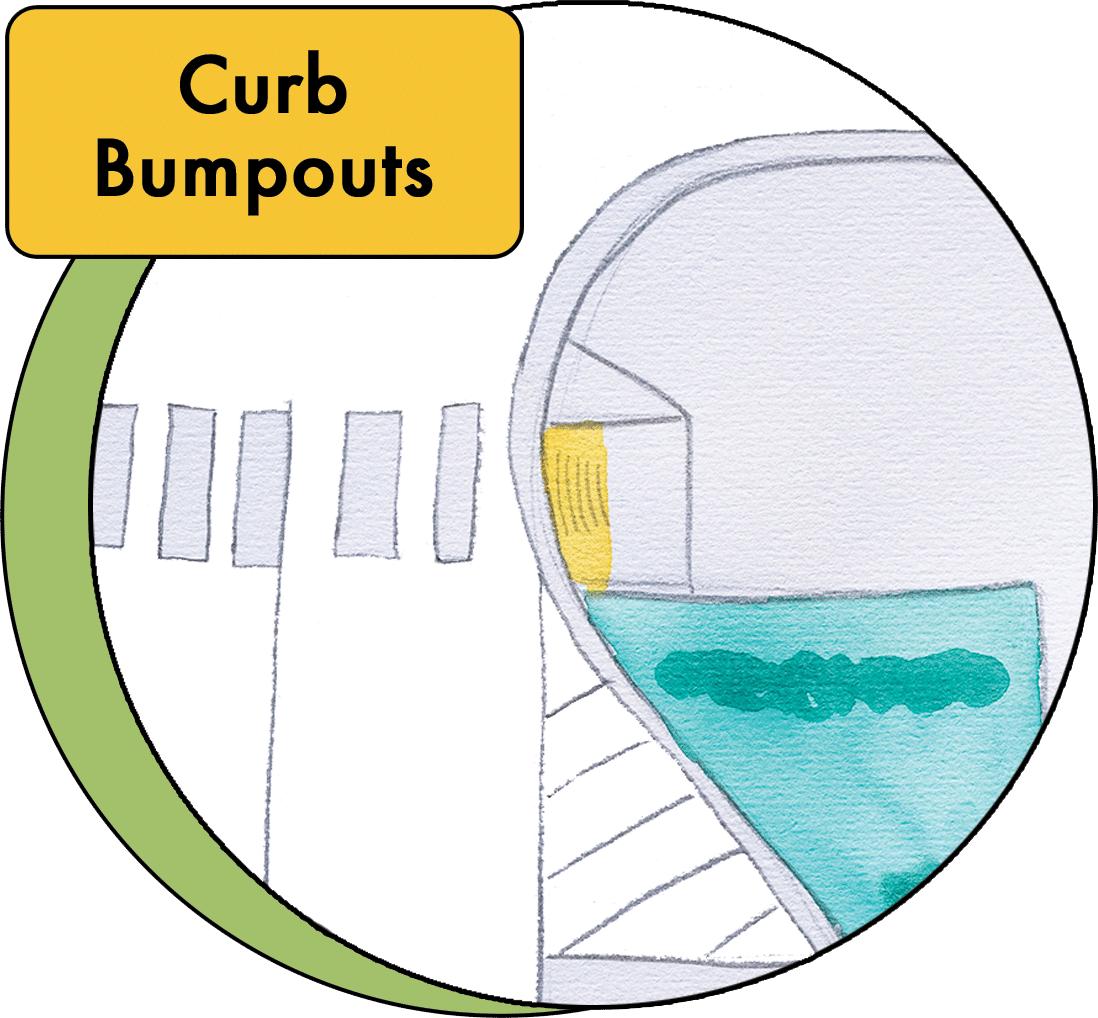
Curb Bumpouts
Curb bumpouts (also called bulb-outs or extensions) extend the sidewalk into the parking lane to narrow the roadway and provide additional pedestrian space at key locations. Curb extensions enhance pedestrian safety by increasing pedestrian visibility, shortening crossing distances, slowing turning vehicles, and visually narrowing the roadway. Curb bumpouts is being added at 9th St to provide additional traffic calming techniques that reduce vehicle travel lanes, and can also serve as a visual cue to drivers that they are entering a neighborhood.*
*Source: National Association of City Transportation Officials (NACTO) and SF Better Streets
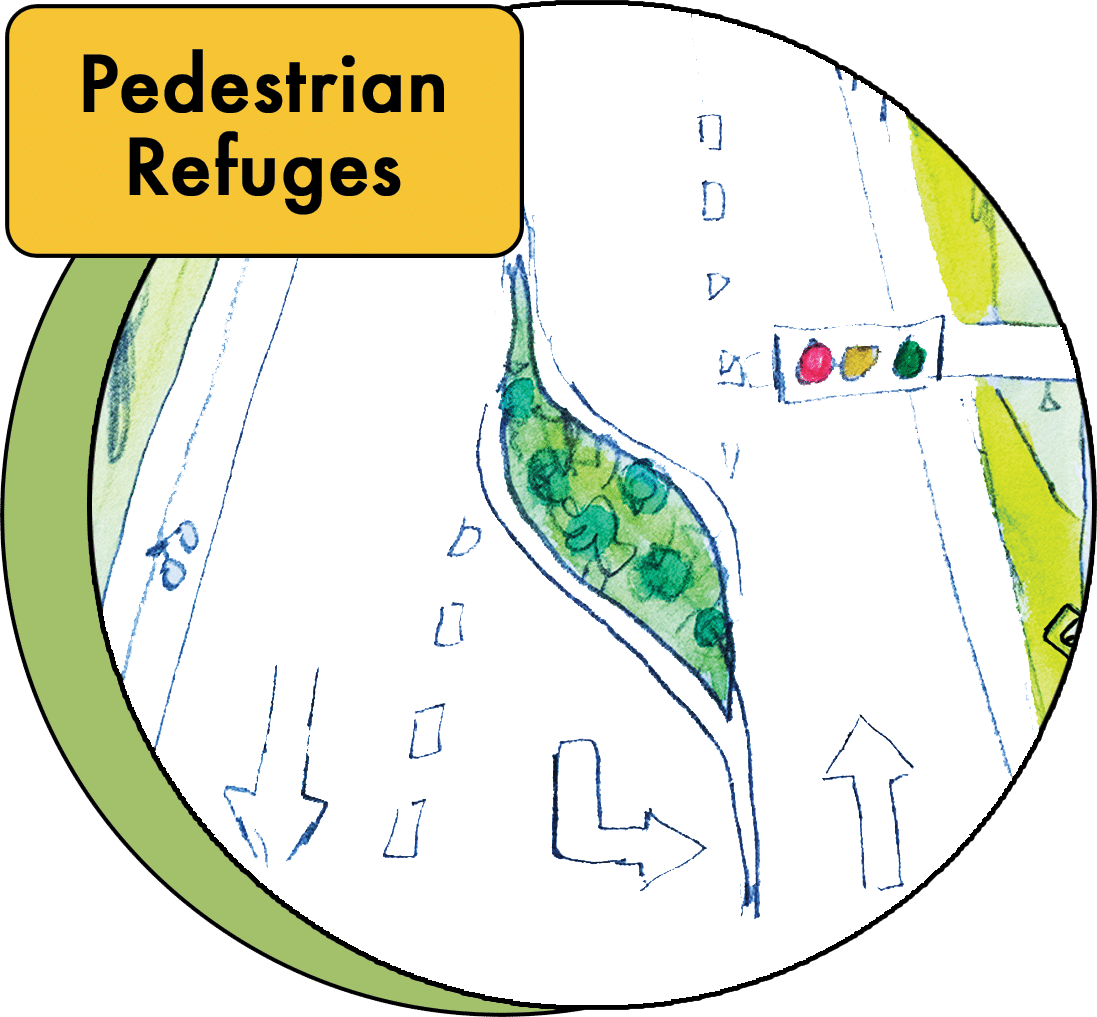
Pedestrian Refuges
Pedestrian crashes account for approximately 17% percent of all traffic fatalities annually and 74% percent of these occur at non-intersection locations. A pedestrian refuge island (or crossing area) is a median with a refuge area that is intended to help protect pedestrians who are crossing a road. A green pedestrian safety island with plantings in the center as part of 2025 Resurfacing from 5th St to 9th St (with a break at 7th St for vehicles turning left) allows pedestrians to cross one direction of traffic at a time, and adds vegetation and beautification to the corridor.*
*Source: U.S. Department of Transportation Federal Highway Administration

Rectangular Rapid Flashing Beacons
A marked crosswalk or pedestrian warning sign may not be sufficient for drivers to yield to pedestrians—and the City of Duluth’s 2023 count showed a 25% average yield rate on 6th Avenue East (compared to a 90% average yield rate on 23rd Avenue West). Although the narrow width of sidewalks on 6th Avenue East does not provide sufficient space for pedestrian-activated Rectangular Rapid Flashing Beacons (RRFBs), an overhanging flashing light is being added to the 9th St crossing to enhance pedestrian conspicuity and increase driver awareness.*
*Source: U.S. Department of Transportation Federal Highway Administration and City of Duluth Planning & Development Department

High Visibility Crosswalks
Poor lighting conditions, obstructions such as parked cars, and horizontal or vertical roadway curvature can reduce visibility at crosswalks, contributing to safety issues. For multilane roadway crossings where vehicle volumes are >10,000 per day, a marked crosswalk alone is typically not sufficient. Enhanced lighting and signage on 9th St will make it significantly safer to cross.*
*Source: U.S. Department of Transportation Federal Highway Administration

Leading Pedestrian Intervals
A leading pedestrian interval (LPI) gives pedestrians the opportunity to enter the crosswalk at an intersection 3-7 seconds before vehicles are given a green indication. An LPI on 9th St as part of 2025 Resurfacing will allow pedestrians to better establish their presence in the crosswalk before vehicles have priority to turn right or left. LPIs provide the following benefits: Increase visibility of crossing pedestrians, reduce conflicts between pedestrians and vehicles, increase likelihood of motorists yielding to pedestrians, enhance safety for pedestrians who may be slower to start into the intersection.*
*Source: U.S. Department of Transportation Federal Highway Administration
VOLUNTEERS NEEDED
Zeitgeist is made possible with your help
6TH AVENUE EAST SPONSORS & PARTNERS
Special thanks to community partners who have provided studies on 6th Avenue East and advocated for change, including: the City of Duluth, Fit City Duluth, Healthy Duluth Area Coalition, Myers-Wilkins Elementary School, Duluth Community School Collaborative, Local Initiatives Support Corporation (LISC), Metropolitan Interstate Council (MIC), Neighborhood Housing Services of Duluth, St. Louis County Public Health & Human Services, Essentia Health, Duluth Transit Authority (DTA), and neighbors living on or near 6th Avenue East.











